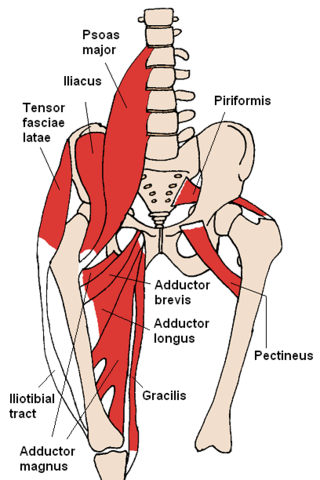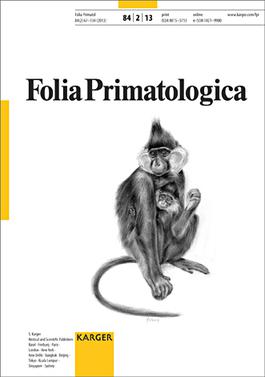
La Folía (Spanish), or Follies (English), also known as folies d'Espagne (French), La Follia (Italian), and Folia (Portuguese), is one of the oldest remembered European musical themes, or primary material, generally melodic, of a composition, on record. The theme exists in two versions, referred to as early and late folias, the earlier being faster.

The adductor muscles of the hip are a group of muscles in the medial compartment of the thigh mostly used for bringing the thighs together.
The Field Elm cultivar Ulmus minor 'Folia Alba-Punctata' was first identified by C. de Vos in 1867, as Ulmus campestris fol. albo punctatis. The tree is assumed to be U. minor by Green.
The elm cultivar Ulmus 'Folia Rubra' was listed as Ulmus campestris foliis rubris by Louis de Smet in his catalogue of 1877, and Edouard Pynaert van Geert in the same year who obtained the tree from M. Gaujard of Wetteren, Belgium. An U. campestris fol. rubrisHort. was distributed by the Späth nursery, Berlin, in the 1890s and early 1900s.
The elm cultivar Ulmus 'Folia Aurea' was first identified by Loudon in Arboretum et Fruticetum Britannicum, 3: 1378, 1838.
Ulmus × hollandica 'Folia Rhomboidea' is one of a number of cultivars possibly arising from the crossing of the Wych Elm Ulmus glabra with a variety of Field Elm Ulmus minor. First mentioned by Morren in 1851 as U. campestris latifolia, foliis rhomboides.
The elm cultivar Ulmus 'Folia Variegata Pendula' was described by C. de Vos in 1867, as Ulmus suberosa folia variegata pendula. Green considered it possibly one of a number of Ulmus × hollandica cultivars, arising from the crossing of Wych Elm Ulmus glabra with Field Elm Ulmus minor.

The Tatra pine vole, also called the Tatra vole or Tatra ground vole, is a species of vole endemic to the Carpathian mountain range in Slovakia, Poland, Ukraine and Romania. Two subspecies have been recognised. M. t. tatricus occupies the western part of the range in Slovakia and Poland, and M. t. zykovi is found in Ukraine and Romania.

Setiptiline, also known as teciptiline, is a tetracyclic antidepressant (TeCA) that acts as a noradrenergic and specific serotonergic antidepressant (NaSSA). It was launched in 1989 for the treatment of depression in Japan by Mochida.

Flutoprazepam (Restas) is a drug which is a benzodiazepine. It was patented in Japan by Sumitomo in 1972 and its medical use remains mostly confined to that country. Its muscle relaxant properties are approximately equivalent to those of diazepam - however, it has more powerful sedative, hypnotic, anxiolytic and anticonvulsant effects and is around four times more potent by weight compared to diazepam. It is longer acting than diazepam due to its long-acting active metabolites, which contribute significantly to its effects. Its principal active metabolite is n-desalkylflurazepam, also known as norflurazepam, which is also a principal metabolite of flurazepam.

Rilmazafone is a water-soluble prodrug developed in Japan. Inside the human body, rilmazafone is converted into several benzodiazepine metabolites that have sedative and hypnotic effects.

Guanazodine is an anti-hypertensive sympatholytic drug.

Mosapramine (Cremin) is an atypical antipsychotic used in Japan for the treatment of schizophrenia. It is a potent dopamine antagonist with high affinity to the D2, D3, and D4 receptors, and with moderate affinity for the 5-HT2 receptors.
The section Epidendrum sect. Planifolia of the subgenus E. subg. EpidendrumLindl. 1841 of the genus Epidendrum of the Orchidaceae was published in 1861 by Reichenbach It differs from the other three sections by having flat leaves. Like the other sections of E. subg. Epidendrum, the inflorescence grows from the apex of the stem, and bears no spathe or sheath at the base of the peduncle.

In human anatomy, the adductor minimus is a small and flat skeletal muscle in the thigh which constitutes the upper, lateral part of the adductor magnus muscle. It adducts and laterally rotates the femur.

Teniloxazine, also known as sufoxazine and sulfoxazine, is a drug which is marketed in Japan. Though initially investigated as a neuroprotective and nootropic agent for the treatment of cerebrovascular insufficiency in the 1980s, it was ultimately developed and approved as an antidepressant instead. It acts as a potent norepinephrine reuptake inhibitor, with fair selectivity over the serotonin and dopamine transporters, and also behaves as an antagonist of the 5-HT2A receptor.

Folia Primatologica is an international peer-reviewed journal focusing on primatology, the study of monkeys, apes, lemurs, and other primates. Folia Primatologica was founded in 1963 by Adolph Hans Schultz, Helmut Hofer, Josef Biegert, and Dietrich Starck. Its start was preceded by two series of primatological monographs, both edited by the aforementioned founders, Primatologia , published in 1956, and Bibliotheca Primatologica, published in 1962.

Morpholine salicylate is a nonsteroidal anti-inflammatory drug.
Álvaro dos Santos Amaro is a Portuguese politician of the Social Democratic Party (PSD) who served as a Member of the European Parliament from 2019 to 2023.

The La Folia Barockorchester is a Baroque orchestra dedicated to historically informed performance. It was founded in Dresden, Saxony, Germany, in 2007 by Robin Peter Müller, who has been its artistic director and concert master. Named after "La Folia", it is focused on music that was performed at the court of Dresden, which they have played at international festivals, and recorded.












